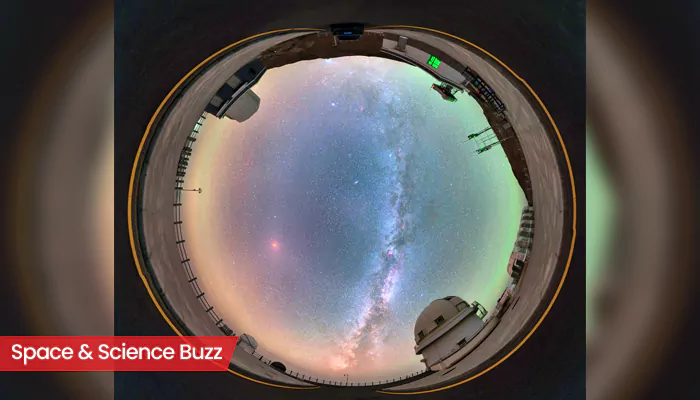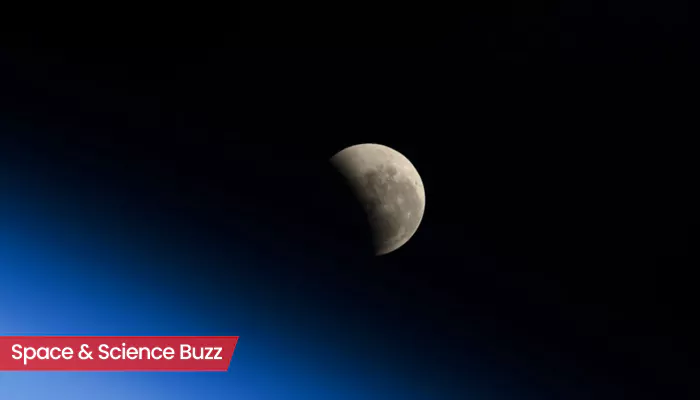Discover 10 Fascinating Facts About Jupiter: The Giant of Our Solar System! A must-read for space enthusiasts!
Jupiter, the largest planet in our solar system, has always been the subject of Curiosity.
Its huge size and colorful clouds help to identify it even from a distance. Scientists and space enthusiasts keep finding new facts about it every day.

Today we will learn 10 facts about Jupiter that will surprise you!
Jupiter is a failed star
Jupiter's size is gigantic. It is so big that it could swallow all the other planets of our galaxy. But here's a shocking secret: Jupiter could have been a star. It contains almost entirely hydrogen and helium, which are the two basic elements required form of a star.

However, Jupiter is not big or dense enough to cause the internal pressures and temperatures necessary for nuclear fusion to begin to a star. As a result, Jupiter lacks the energy to become a star.
The Great Red Spot is Shrinking
Jupiter's Great Red Spot is a massive storm that has been on its surface for centuries. This storm is so big that it can contain three Earths. But, in the last few decades, it is gradually getting smaller.

Scientists have not been able to understand the reason for its shrinking exactly, but they are monitoring the IS phenomenon closely. In the future, the Great Red Spot may even disappear! IS chaining can cause changes in Jupiter's atmosphere.
Jupiter Haas A Really Strong Magnetosferae
Jupiter's magnetic field is also 20,000 times stronger than Earth. This strong magnetosphere creates a large bubble around Jupiter, which protects it from solar wind. The Magnetosferre is so big that if it were visible, it would look bigger than the moon when viewed in terms of meaning.

There are also intense radiation belts on Jupiter due to the ISS magnetosphere, which can be dangerous for space probes. Scientists are studying Magnetosferae to find out about the interior and composition of Jupiter.
Jupiter Haas 80 Moons – End Counting!
Jupiter has been detected around 80 moons. This includes the Galilean moons – Io, Europa, Ganymede and Callisto. Ganymede is the largest moon in the entire solar system. Jupiter continues to capture even smaller ostroids and objects with its gravitational bridge.

Therefore, it is believed that the number of Jupiter moons may increase even more. Each moon has its own unique characteristics, which makes it interesting.
Jupiter Haas Phantom Ring
People often know about Saturn's ring, but Jupiter also has rings. Jupiter's rings are not as bright as Saturn's rings. It is made up of clay and dust particles. If you look at Jupiter with a telescope, you will not see these rings.
More information about Jupiter's ring has come from NASA's Juno mission.
Jupiter is a really fast spinner
Jupiter is the fastest rotating planet in our solar system. Jupiter completes one orbit on its axis in just 10 hours. It takes 24 hours for the earth to complete the IS affair. Due to the quick rotation of Jupiter, its actuatorial region is bulged, due to which it does not look perfectly round.

Due to its quick rotation, extreme weather conditions are created on this planet.
Jupiter Can Protect Earth
Scientists believe that Jupiter protects Earth from astrosteroids and comets. Jupiter's large gravitational bridge keeps the astrothyroid out of the sense. Because of this, the asteroids avoid colliding with the earth.
But some scientists believe that Jupiter also deflects the astroroid, which increases the risk of their collision. The answer to this question is still being searched.
The temperatures on Jupiter exceed 30,000 degrees Celsius
The hot spot recorded is hotter than the Earth's surface, It exceeds to 30,000 degrees Celsius. Moreover, the planet is still getting hotter and hotter. This is because of Jupiter's gaseous clouds that retain the heat in the atmosphere.

Jupiter Haas No Solid Surface
Jupiter is a gesseus planet. This means that its surface is not solid. If you try to travel through the center of Jupiter, you will gradually enter the liquid from the gas and then into the densely packed liquid.

Jupiter's atmosphere is made up of manly hydrogen and helium and has a layer of metallic hydrogen inside. There is no solid surface to stand anywhere on Jupiter!
They Been There!: The Scientist has sent several missions to Jupiter. The first Pioneer 10 flew past Jupiter in 1973. After this, missions like Voyager 1 and Voyager 2 also collected a lot of important information about Jupiter. The Galileo probe entered Jupiter's atmosphere and transmitted data. Currently, the Juno mission is orbiting Jupiter and collecting new information about it.
Jupiter has always fascinated space scientists and researchers. There is still a lot to discover in this huge gas giant, and future missions will help us get to Jupiter better. This Amazing Planet is an important part of our solar system and helps to increase our understanding of the Universe.












